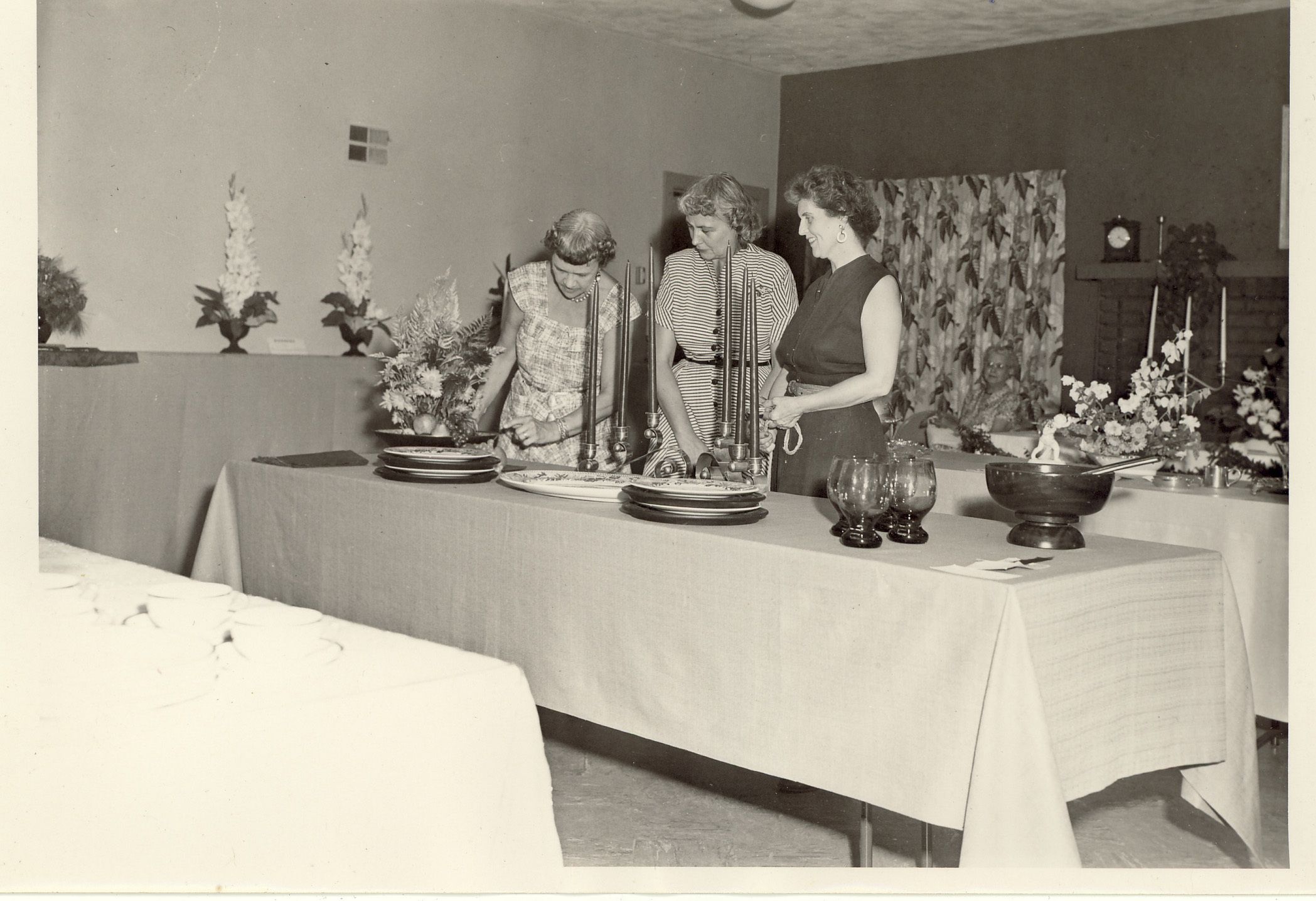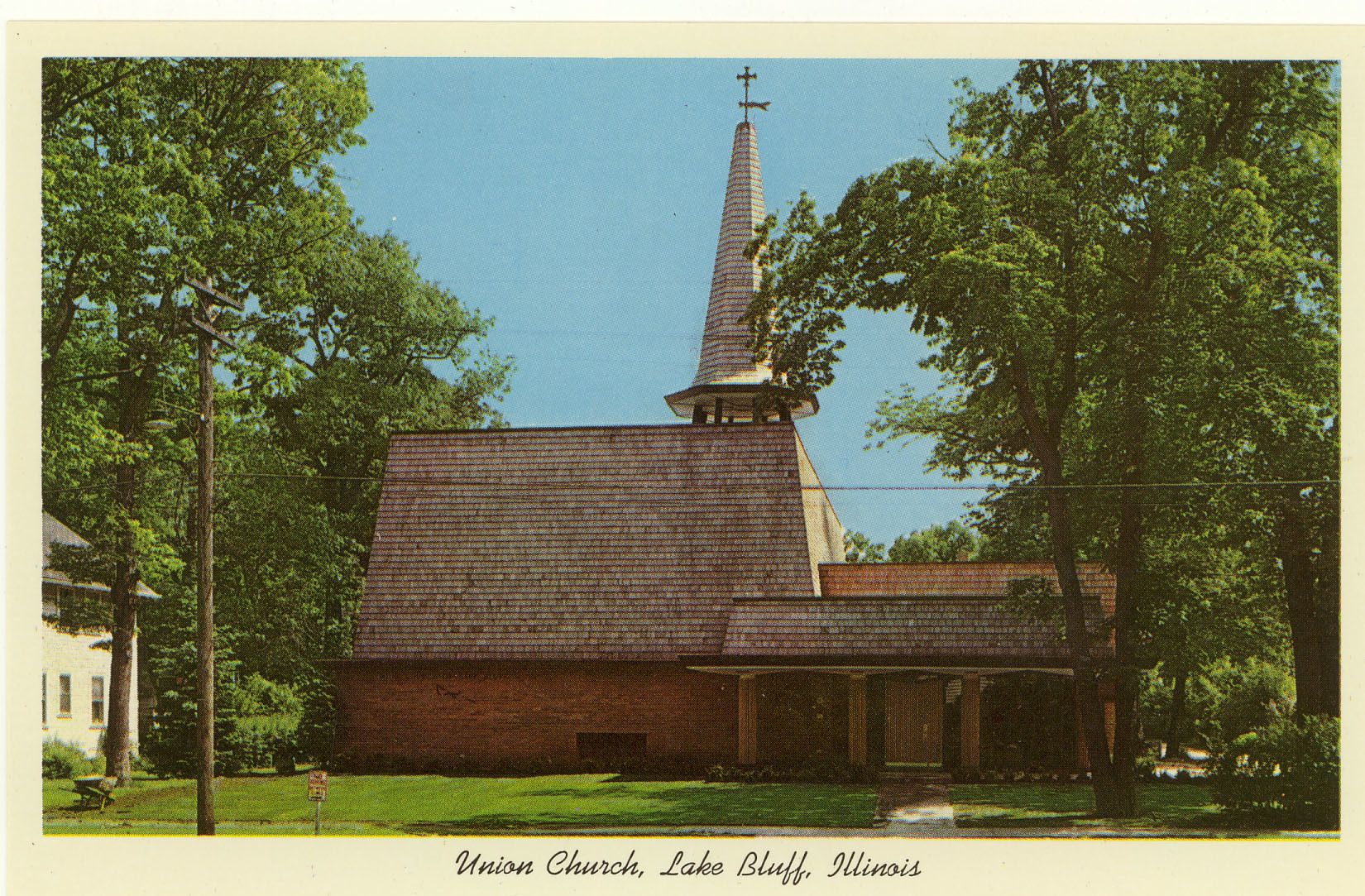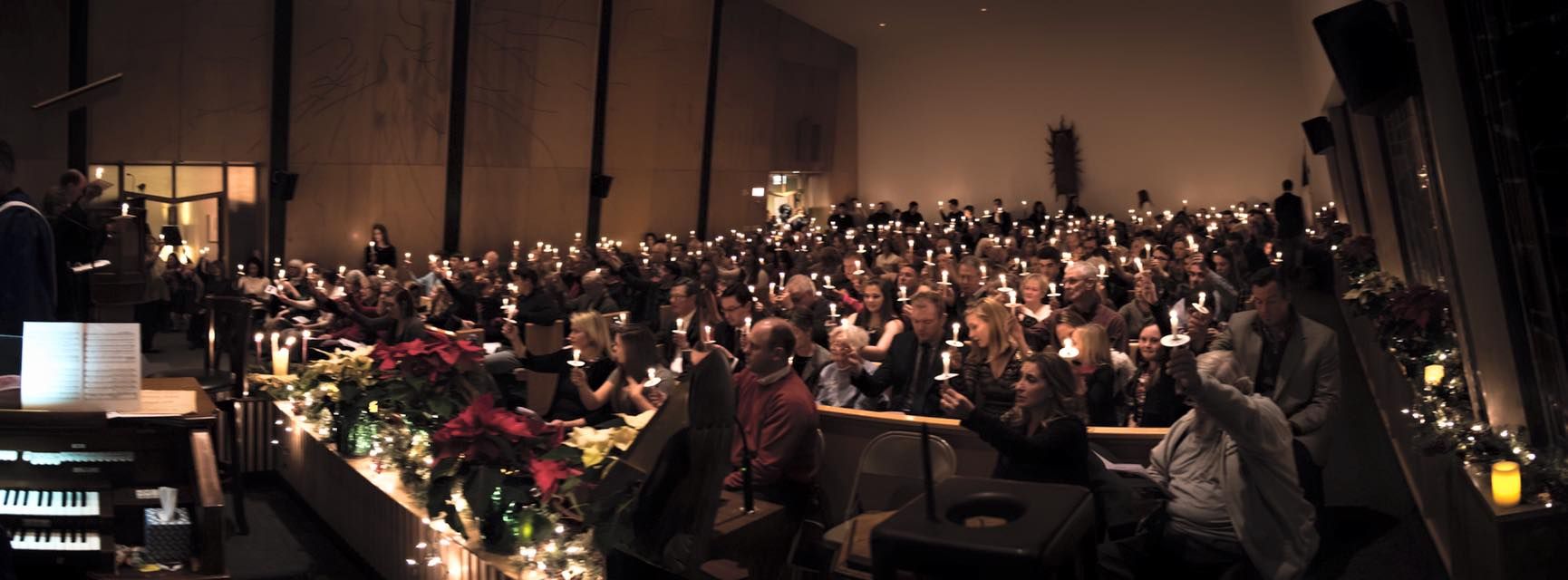
Members of the Lake Bluff Women's Club in the ""Fireplace Room"" of Union Church.

A postcard depicting Union Church of Lake Bluff.

Members of the Lake Bluff Women's Club in the ""Fireplace Room"" of Union Church.

The congregation of Union Church on Christmas Eve.
In the years following the Civil War, small, non-denominational “Union” churches were being erected all around the country to help reunite the nation. The Union Church of Lake Bluff was one such church. First founded in 1866, Union Church was built in what was then called “Rockland” on the corner of what are now Rockland and Green Bay roads. At this time, it was one of only a few buildings in the community; Rockland was home to a post office, inn, one-room schoolhouse, several log homes and farms, and a train depot in addition to the new church, which was originally called Rockland Union Church and nicknamed the “little brown church.”
The church building was condemned and torn down in 1902 so that an electric rail line between Lake Bluff and Libertyville could be built. In response, church members began to hold services in the homes of the members. In 1907, the Lake Bluff Country Club was used to hold services. By 1912, the Ladies Guild of the church raised enough money to purchase a plot of land for the price-tag of $2,500. Designs for a church were made, but World War I caused the building to be put on hold. Finally, in 1920, the congregation had a building to call its own. Pastor Nelson Hall had a building from Great Lakes Naval Base moved and put up at the present site of the church at 525 E. Prospect Ave. In 1964, this old building was torn down and a new church, which still stands today, was built. The new church was designed by local architects Verner MacAlister and Don Mahan, who were husband and wife.
The church has historically been very involved in the community. In 1914 and 1915, there was a monthly newsletter sent out to subscribers (paying $1 yearly) regarding living a faithful life and the happenings of the church. Summer residents of Lake Bluff received the newsletter to stay informed about the church. Called “Common Sense,” the newsletter sometimes included other Lake Bluff news, re-published articles, and jokes. Parts of sermons were sometimes published as well, although pastors said it was not their priority to write for Common Sense. Since the 1950's, Union Church has been setting aside money for community programs, and currently gives thousands of dollars yearly to various organizations.